Column
ColumnPuppets in Japan
Puppets in Japan
Mojca Redjko, managing and artistic director of the Maribor Puppet Theatre
After being kindly invited by Mr. Shuji Kogi and the EU-Japan Fest Japan Committee, I set sails for Japan on 31 July 2011. The purpose of the 10-day trip: to scout the puppetry scene of Japan with the goal of finding a play to be performed in Maribor as part of the European-Capital-of Culture-project (EPK) in 2012, and to explore the possibilities of a lasting cooperation. Both tasks have been fulfilled.
I shall begin the summary of the visit in a less formal manner.
The rich programme mentioned above was only possible to be completed because of thorough and meticulous preparations and simultaneous coordination of the staff of the Japanese EU-Japan Fest office. Multi-tasking on such a broad scale and with such a high level of performance efficiency was something that I had never witnessed before. With this in mind, I would like to thank my distinguished hosts, not just for the invitation and hospitality (which was absolutely amazing), but also for the support that lead to the visit unfolding in the best manner possible, offering clear insight, painting a broad picture, and providing for a substantially defined point of view on the research subject. My most profound thanks!
My stay in Japan encompassed (in chronological order):
- A visit to the EU-Japan Fest Japan Committee office;
- A brief sightseeing tour of Tokyo (Imperial Palace, National Theatre, Meiji Shrine);
- A visit to the National Bunraku Theatre in Osaka: a tour of the backstage area, a presentation of puppetry technology,a meeting with the artistic director Mrs. Etsuko Mineta, and attending a play entitled Sonezaki Shinju (The Love Suicides at Sonezaki); brief meetings with Mr. Hiroshi Sakurai, and Mr. Eiji Oshima from the Kyoto University;
- A visit to the Kyoto University of Art and Design and its Performing Arts Center, a tour of both theatres, and a meeting with the director of the centre, Mrs. Miho Kawahara;
- A visit to the Kyoto Art Center, a meeting with Mrs. Keiko Yuri and artistic coordinator Mrs. Mami Katsuya, as well as a meeting with Mr. Yusuke Hashimoto – Program Director of the Kyoto Experiment festival;
- A tour of the Kyoto Imperial Residence;
- A trip to the international 4-day puppetry festival Iida Puppet Festa in Iida;
- The viewing of some 30 plays at the festival;
- A tour of the Iida City Kawamoto Kihachirō Puppet Museum and a viewing of 3 of Kihachirō Kawamoto’s animated films;
- A viewing of the documentary film Vein (directed by Seiki Watanabe) about the brilliant puppet master and founder of the Dondoro Theatre, Hoichi Okamoto, who passed away last year, a meeting with two representatives of the Japanese national UNIMA organization, Mrs. Fumiko Matsuzawa from the Hitomi-za Theatre (also director of the Foundation Modern Puppet Centre) and Mrs. Tamiko Omaga from the renowned PUK Puppet Theatre in Tokyo;
- And spontaneous, yet invaluable conversations with guests form the United Kingdom, the USA, Denmark, and Sweden.
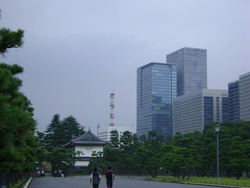

Tradition
My distinguished hosts have provided me with an exact presentation of the Japanese puppetry tradition and lead me directly into the shrine, to the source of it all, to the place where the most complex puppetry aesthetics in the world is born – the National Bunraku Theatre in Osaka. The artistic director, Mrs. Etsuko Mineta, was so kind as to open the door to the “Sacred” to me. She also organized a demonstration of how the traditional bunraku puppets are crafted, and even presented me with the opportunity to handle the handcrafted masterpiece. The following will not contain an in-depth presentation of the history and evolution of bunraku, yet I would still like to present a few of the basics. Bunraku is regarded as one of the most intricate and complex arts of performing. It includes three elements:
- Tayū – the chanter, who is explaining the background story and the side story, and interpreting all of the characters present on stage, thus creating the appropriate atmosphere;
- Shamisen – a three-stringed instrument; the Shamisen players perform the music by heart (plays usually last for about three hours); the futozao, the largest shamisen, is ascribed the most prominent position, because it creates particularly strong emotional atmospheres;
- Ningyōzukai – the puppeteers/animators manipulating the puppets; three of them usually manipulate one puppet: the Omozukai is the main puppeteer, who controls the head (and thus also the torso) and the right hand of the puppet – it normally takes between 30 and40 years of practice for a puppeteer to be elevated to this prestigious position; the Hidarizukai is the left puppeteer, using his or her right hand to move the left hand of the puppet; the Ashizukai is the third puppeteer, who operates the feet and legs of the puppet – it should also be noted that female puppets do not have legs or feet, demanding from the Ashizukai to provide for a convincing performance with the help of the puppet’s costume and his or her own feet.
Bunraku is Beauty. It is a demonstration of skill, discipline, accuracy, and connectivity. Bunraku is not some sort of “mathematics”; it is a holistic from of performing, consisting of elements that have been (because of their fullness) creating magic, perfection, and integrity by themselves for the past 300 years.
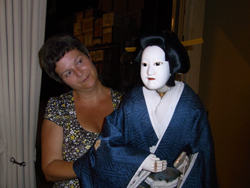

Modern Times
Who would have thought the most modern leap should be provided by the oldest city on my path? Kyoto is simply enchanting. I experienced it in extremes: visiting the Kyoto University of Art and Design and its Performing Arts Center on one hand, and the former imperial residence on the other, while everything was accompanied by a kind and friendly loquaciousness of my distinguished hosts.
The modern and at first sight also successfully ambitious Kyoto University of Art and Design offers a performing arts study program, and is therefore equipped with two theatres – one monumental and traditional, suitable for staging plays in another traditional Japanese art of theatre – kabuki; and a smaller studio, a modern “black box” where the students were just engaged in their practice activities while we were enjoying the tour. Thus, we were also treated to the privilege of attending a rehearsal.
And the Kyoto Art Center is a neat depiction of the city council’s smart decisions. An old primary school (form the 1930s) was transformed into a modern art center, yet the appearance of the building remained unaltered. The center was provided with modern equipment, the purpose of space exploration was changed and now functions excellently within the dichotomy of the “dusty” classrooms filled with modern content. During my visit, the center played host to a well-attended international theatre workshop based on Michael Chekhov’s acting method, and the whiter-than-white showroom in the northern part of the premises (there is a southern part as well) contained an exhibition entitled Sweet Memories, based on nostalgic images crafted from all sorts of snacks. But the center’s main project is the Kyoto Experiment modern theatre festival, which sports a highly interesting and artistically convincing program (more:http://kyoto-ex.jp/eng/about/)
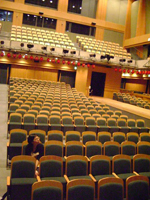
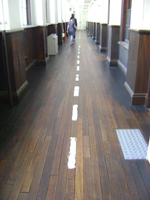

Iida and the Puppetry Festival
Iida is a city situated in the southern part of the Shinshu region, in the midstream of the Tenryu River, which flows southwards from Lake Suwa into the Pacific. The city has approximately 105,000 inhabitants. It is a 4-hour highway drive to Iida from either Tokyo or Osaka, and a 2-hour drive from Nagoya.
The region is renowned for cultivating fruit (nashi, peaches, apples), thus the city chose the apple as its symbol. The most important celebratory event is the Ringon Matsuri (Apple Festival), and the city is also hosting the largest puppetry festival in Japan since 1979. The fact that Iida is the city of puppets is evident from numerous traditional puppetry-based events (not just the Iida Puppet Festa), which are staged throughout the year, and from other impressive sights such as the Futari-nakayoshi sculpture, the puppet clock tower, the lavish puppetry theatre building, and the puppet museum dedicated to puppet and film artist Kihachirō Kawamoto . Iida is also famous for makers of mizuhiki, a sort of miniature decoration made of colorful cords created from rice paper. The mizuhiki is known as a traditional gift at special occasions and holidays.
The Iida Puppet Festa takes place each year during four of the early days of August and hosts approximately 200 performers, who stage around 400 plays. The purpose of this international festival (this year it hosted performers from Denmark, Kazakhstan, Sweden, the USA, and the Czech Republic) is to showcase amateur and professional puppetry, to share experiences in a cordial manner, to promote puppetry, and to activate the local population with the intent of motivating them towards artistic thought and creativeness in a broader sense.http://www.city.iida.lg.jp/puppet/english).
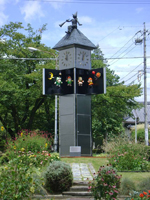
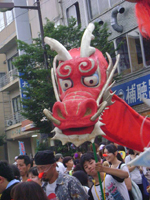

During the festival, I had seen approximately 30 performances, which differed in genre, theme, and production, and had collectively stirred rather mixed emotions in me. The state of affairs implies an extreme bipolarity in development and the emphasis on creative and goal-oriented individualism, while all plays revealed a common passion for the art of puppetry.
Some amateur puppeteers chose naïve technological solutions, picturesque visual imagery, and affordable materials (as for example in the case of children’s play ‘Tuesday’s Feast is Toad’ of the Puppet Theatre Kyougei), while settling on messages that were emphatically educational.
It was also interesting to observe the comical approach, which had been featured quite frequently. The audience adores clowns of all kinds; from those influenced by the art of cabaret (like for example the bell-playing Mashu & Kei) to such whom we might perceive as very banal and “ladylike” piping klutzes. They may also be mimes (Petit Balloon), while ventriloquists are preferred even more (Ikkokudou Fukuwa-jutsu).
Although a strong presence of simple naivety is apparent, an individual kind of puppetry aesthetics evoking admiration and adoration keeps evolving parallel to it. The most distinct representatives of the noted kind are the fantasy play Nonosama performed by Kawasemi-za and the noh-puppetry dialogue ‘Wheel’, staged by the Hitomi-za theatre. The PUK Puppet Theatre’s ‘Scarf Fantasy’ was also breathtakingly beautiful and highly original. Nonosama is an interesting synthesis of the animators’ stylized dance movements and the contrastingly picturesque marionettes. This may have been the only combination of the traditional and the contemporary in the Japanese puppet theatre that I had encountered during my stay.
I have seen even more beauty, but the abundance of spoken text prevented it from enchanting me completely. Yet, I still enjoyed the polished aesthetics of the colors and materials.
The play Pohádky (Stories) by Czech artist Noriyuki Sawa deserves a special place. Sawa is actually a Japanese puppeteer who has been living in Prague for more than twenty years. He works all over the world. He studied at the DAMU, where he is (among other things) currently a lecturer. His play ‘Stories’ is an individual interlacement of the European and the Asian, of the contemporary and the traditional. This is proven by the opinions of both, the Japanese as well as the Europeans, who state that Sawa belongs to the respective other. My personal opinion is that he is very much Japanese, although his expressivity on stage reveals the proverbial Czech approaches quite clearly.
The Iida City Kawamoto Kihachirō Puppet Museum, dedicated to an artist, who crafted puppets for the purpose of producing animated movies, is marvelous as well. The museum repository includes puppets from two TV series; the Chinese Romance of the Three Kingdoms and the Japanese The Tale of the Heike. It is supplemented by a presentation of traditional puppet crafting techniques and procedures, and a projection of short films from the years between 1968 and the 1980s.
I dare regard the documentary movie Vein, which depicts the work of Hoichi Okamoto, as one of the strongest experiences. Hoichi Okamoto, a willful butoh dancer (who passed away last year), developed an original puppetry technique appropriate for performing with human-sized puppets, which in some cases come only with a mask, in other cases only with a head, with the torso being represented by the costume, and the individual body parts by the body of the dancer-animator. The story is conveyed through lyrical dialogues of two bodies, which intertwine, separate, and then become one again, while the performance is accompanied with traditional Japanese music. The intimate dance under the cherry tree during the cherry blossom festivities (Sakura Matsuri) is undoubtedly the most beautiful duet.
Another highly emotional experience was the performance by the Edo Marionette group. It is basically one person, Mitsuro Kami, who performs with traditional Japanese marionettes. He is definitely best known for his rendition of the Shishi-mai (Lion Dance), a performance etude with a very complicated marionette, which the animator handles with both hands (and occasionally even with his teeth). The story is neat (and I encountered it in various versions at the festival, even in bunraku and as a masked-dance play) – it depicts a lion, who dances around the space boastingly, beholds itself vainly, gestures to the audience, calms down, then becomes infuriated by a butterfly, but ends up catching its own tail instead of the butterfly. In the Japanese culture, the lion represents a benevolent being that brings health and success. Matsuro Kami’s performance is poetry in motion, unbelievable virtuosity in handling with the marionette, with the relationship between man and marionette representing the source of the power of the scene.
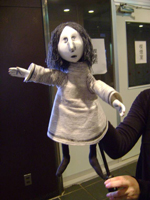
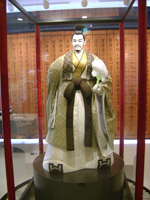
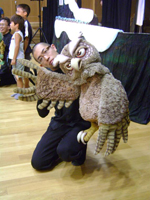
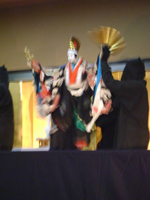
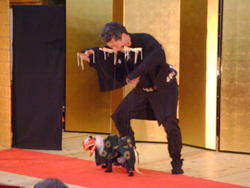

Summary
The working visit to Japan was very useful. Moreover, it was basically a real “pocket-edition” study trip through the fields of performing arts which interest me the most. And there can be only one conclusion: Yes, forging connections is urgent, and not just for in the year 2012, for we are talking about the natural urgency for exchanges, mutual learning, and mutual exploration of new paths. With its extraordinary and rich tradition, as well as its highly increased development during the last 50 years, Japan represents an affluent source of inspiration, which can most definitely convey appropriate values upon the Western civilization once again. Even when it comes to art.
Suggestion
We at the Maribor Puppet Theatre would gladly host as many Japanese performances as possible during the year 2012. Therefore, I have drawn up a proposal, which includes several contents and is sufficiently rational at the same time (even regarding the number of performers). It offers a comprehensive insight into the Japanese puppet artistry and at the same time enables the staging of a rounded “Japanese happening” in Maribor.
- Otome-bunraku – Women’s bunraku, which is also performed by the Hitomi-za theatre.
- Edo Marionette – small etudes with traditional marionettes on strings.
- The screening of selected animated films by Kihachirō Kawamoto.
And since the wish for Mr. Sawa directing in our hallowed halls was so strong, we contacted him and were able to reach an agreement for November 2012. Therefore, it might be sensible to merge the aforementioned contents – starting with our premiere, which is set for 2 November 2012, and following it up with a series of other guest-related events. By proceeding thusly, we would be able to direct the attention toward the Japanese story appropriately and to abide to the dynamics of the Japanese funds intended for financing the tour abroad at the same time.
◎Maribor Puppet Theatre website: Maribor Puppet Theatre








